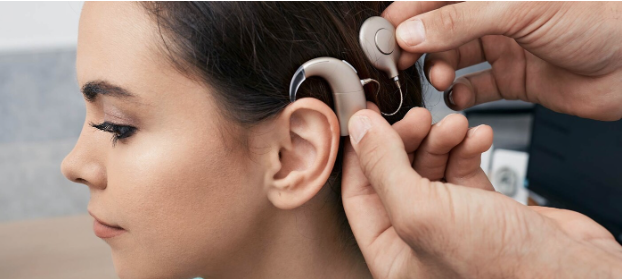
What are cochlear implants?
In recent years, cochlear implants have been recognized by audiologists and physicians alike as a useful tool that provides people who are deaf or severely hard of hearing with a sense of sound and a better understanding of speech, but some mystery still surrounds these devices. As they continue to gain more attention, even more questions arise. How do they work? Who’s allowed to gvet these implants? Are they dangerous? Each of these questions has the capacity to stigmatize and clarify, so in an attempt to detangle certain misconceptions, we are going to address them and hopefully, provide a clearer definition of their role in hearing healthcare.
As it was defined earlier, cochlear implants are a tool that assists those with severe hearing loss or deafness, but unlike hearing aids, cochlear implants do not amplify sound for damaged ears. Instead, according to Cochlear, they “are designed to mimic the function of a healthy inner ear (or cochlea). They replace the function of damaged sensory hair cells inside the inner ear to help provide clearer sound than what hearing aids can provide.” Here’s how each part works:
A microphone situated near the ear picks up sounds and sends them to a speech processor, and the processor selects and arranges these sounds for the receiver located just under the skin. The sounds are then converted into electronic pulses and sent down to the electrode array within the cochlea itself. The auditory nerves in the cochlea then pick up the signals and send them to the brain, and just like that, someone who could not hear before, has the ability to hear. But, the sound created by cochlear implants doesn’t precisely replicate real-world sound.
According to the National Institute on Deafness and Other Communication Disorders (NIDCD), “An implant does not restore normal hearing. Instead, it can give a deaf person a useful representation of sounds in the environment and help him or her to understand speech.” As a result, it takes time to relearn and acclimate to this new sound environment. Despite this extra hurdle, people are still opting in for the chance to hear their loved ones again.
In an estimate provided by the United States Food and Drug Administration (FDA), over 118,000 devices have been implanted in adults and around 65,000 in children since the end of 2019, but not everyone qualifies to receive one.
To be eligible, according to the Mayo Clinic, you must have:
- Hearing loss that interrupts spoken communication
- Limited benefit from hearing aids as determined by specialized hearing tests
- Motivation to participate in hearing rehabilitation and be part of the hearing world
- Realistic expectations of what cochlear implants can and can’t do for hearing
Since this is a surgical operation, there are certain risks that candidates should be aware of including the loss of residual hearing, meningitis and device failure among other things; however, candidates that have gone through with the procedure have reported improvements in their ability to hear speech, recognize everyday sounds and communicate in general.
Making a life-changing decision like this is no small task, so before deciding on anything, consult your local audiologist to see if you qualify, air out your questions and concerns and go forward with the route that best supports your hearing and mental health needs.
